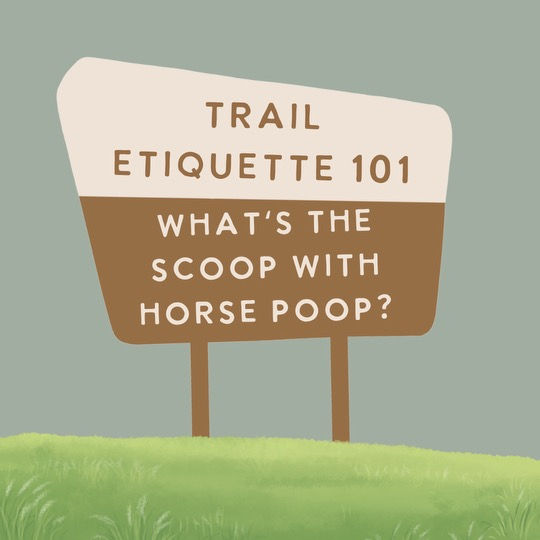Rider Diplomacy: Trail Etiquette 101
- Lily

- Apr 25
- 3 min read
Updated: Jun 22
Hot take: Your attitude towards other people you see on trail matters when you’re out riding your horse!

Stock users are in the minority on most public trails. Many hikers have little experience around horses, and it only takes a single rude encounter to leave them with a bad impression of horse people as a whole.
Trail users on foot and bike are required to yield the right of way to horses, but a lack of public education can leave people confused or frustrated by why they need to move aside for horses. Combine this with being addressed rudely by a rider and it’s no wonder why some people are less than enthusiastic about keeping trails open to equestrian access.
Employing rider diplomacy is an easy step you can take to help preserve your ability to ride horses on public land.

What do I mean by rider diplomacy?
Being a diplomatic rider means considering your choice of words when you meet other trail users.
You can make your needs known while still being friendly and courteous!

I keep rider diplomacy in mind every time I hit the trails, especially when I’m in an area that I know will be busy (ie. scenic & easily accessible trails on a weekend). For me, this looks like always greeting people I come across and thanking anyone who moves over to the side of the trail for me to pass. Being diplomatic means being able to adjust your behavior depending upon the situation and making the best choice for the group. For example, if I am riding on wide trail and a large group of hikers or cyclists is approaching from other direction, I will typically pull my horse off the trail if it is safe to do so and let the other group pass, even though I technically have the right of way. If I can make everyone’s experience simpler and more convenient, I will. When I do need to pass people or ask them to move over for me, I try to be as polite and straightforward as possible, always indicating what side I would like to pass on.
In the event that my horse does spook at someone coming around a blind corner or an unfamiliar object like a stroller or an umbrella, I make an effort to stay calm and collected not just for my horse, but for other folks on trail as well. These are also situations when you can help teach people a bit about how horses interpret the world.
Your wording can have a big impact on how people come away from having an experience with a horse on trail.
It can be as simple as saying:
“Oops! Would you mind stepping out of the bushes a bit and saying something to my horse? He’s a little worried right now because he thinks you might be a predator instead of a human. Thank you for making room for us to come through!”
Vs.
“Can you move!? You’re scaring my horse!” or, as I’ve seen some riders do, muttering angrily under their breath instead of directly addressing the hikers that their horse is spooking at.

Tips for being a positive trail riding ambassador:
Acknowledge and appreciate when someone yields the right of way
When possible, stop and say “Hi!” Lots of people are excited to see horses on trail.
Use education to your advantage. What’s common knowledge to horse people isn’t know to others.
Tensions rise when you're dealing with a spooking horse. Try your best to remain polite and give people grace.
Listen to others, respect their concerns and fears.

Generally speaking, a diplomatic rider follows the same basic guidelines of human decency that everyone should put into practice when they are outside recreating. Some days, I’ve found sharing multi-use trails to be an exercise in compromising and problem solving, but these are also some of the many skills I am grateful to practice on board my horse and apply to the rest of my life.

